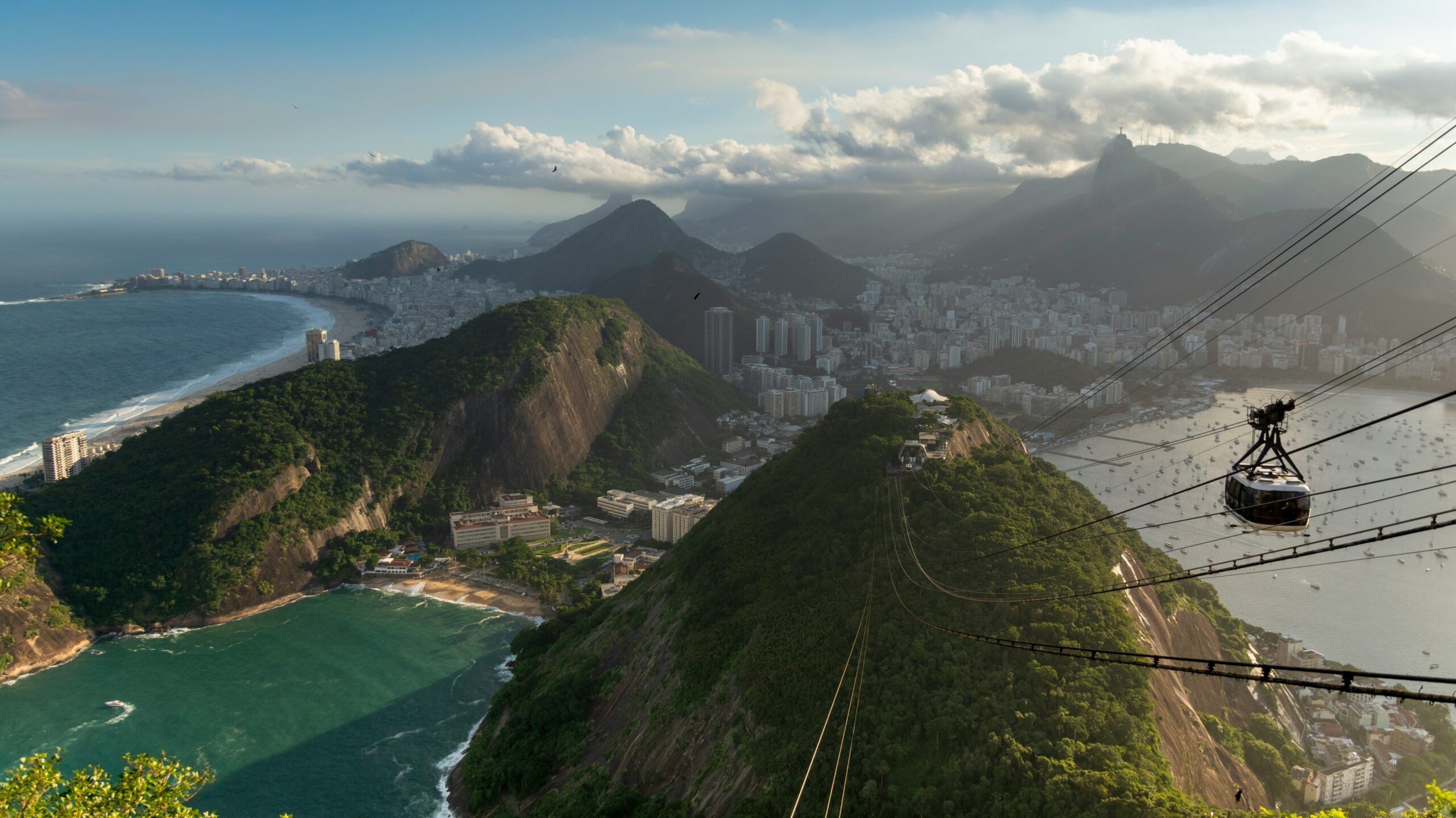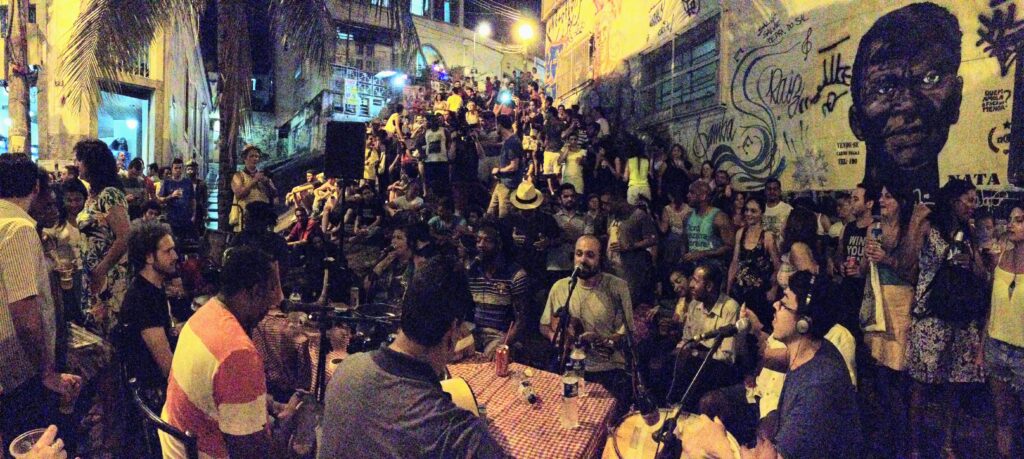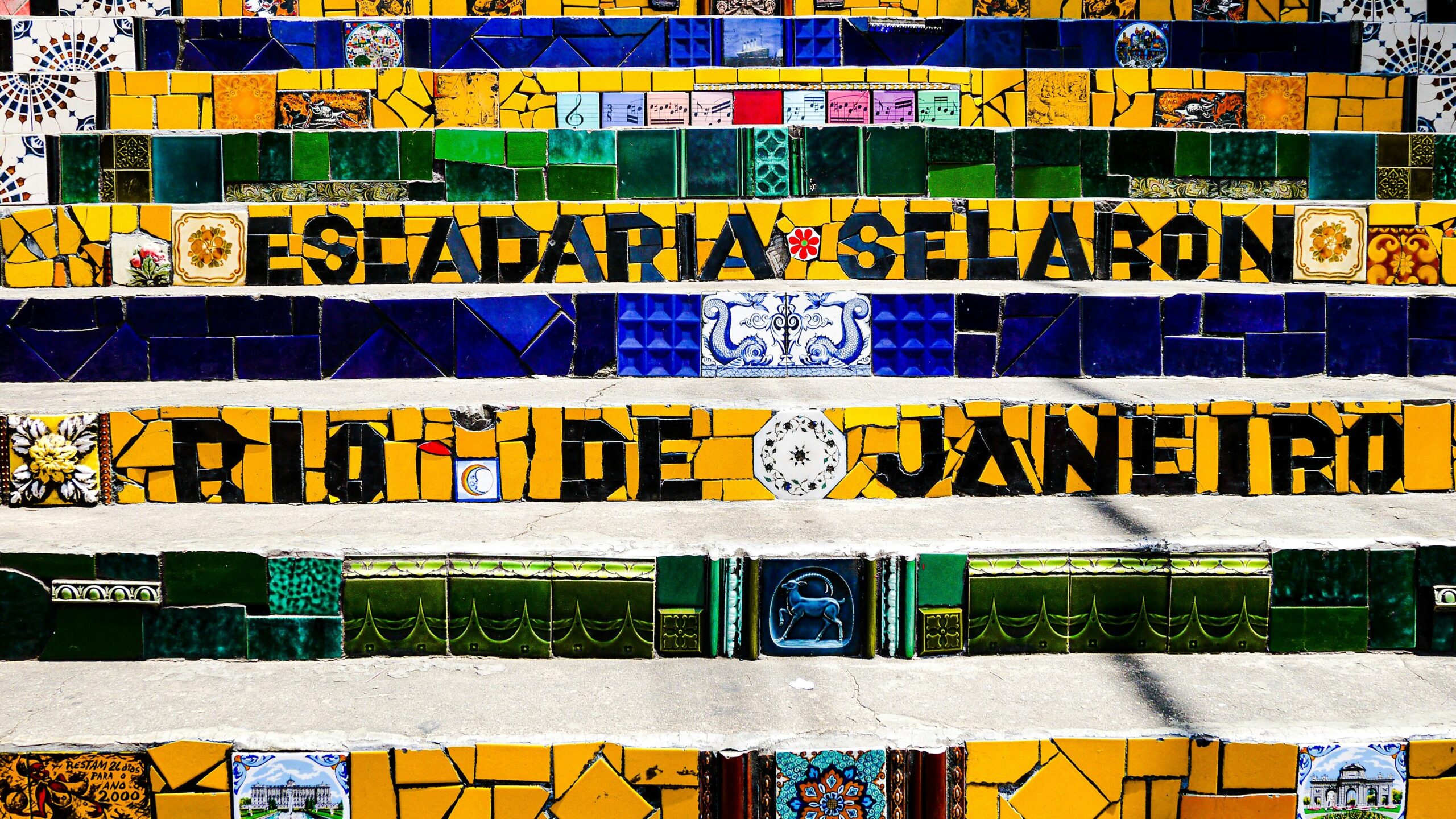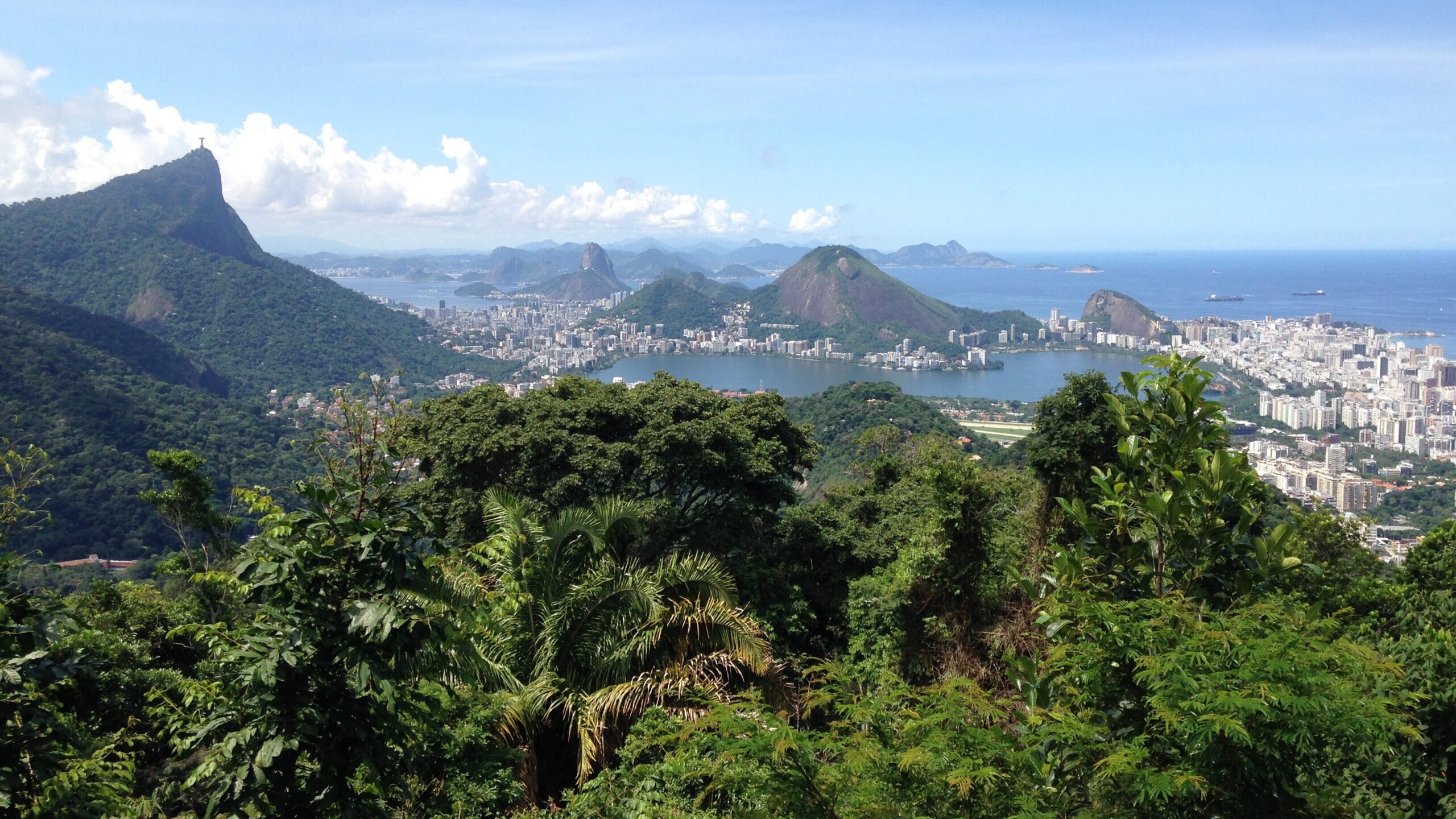Having traveled to many countries and places, Rio de Janeiro continues to hold a special place in my heart. Whether you’re gazing up at the impressive Christ the Redeemer, exploring the breathtaking views from Sugarloaf Mountain, or losing yourself in the rhythm of samba, Rio truly has something for everyone. In this comprehensive guide, I’ll share tips on the must things to do in Rio de Janeiro, helping you plan your trip and experience the city like a local and make the most of your trip. Let’s dive in and explore why Rio is known as the ‘Cidade Maravilhosa’ (Marvelous City)!
Iconic Landmarks
Christ the Redeemer

Christ the Redeemer, a symbol of Rio de Janeiro, is located at Tijuca National Park. The statue, completed in 1931, is recognized as one of the New Seven Wonders of the World. It is hard to not get emotional admiring the breathtaking panoramic views from its base, that showcases Rio’s stunning landscapes.
How to visit
First thing you need to know is that there are a few ways to get there: by train, by shuttle, or hiking. While hiking is an option, it requires a good level of fitness and there are some safety concerns one should be aware of. So I won’t be covering its details in this guide.
Train Option: The Corcovado Railway is a scenic train ride of about 20 minutes that takes you through the Tijuca Forest, offering stunning views along the way. After booking your trip online here, you will receive a voucher confirming your booking. Remember to validate it at the boarding station to receive your actual ticket.
Corcovado Station Address: Rua Cosme Velho, 513 – Cosme Velho.
About 10 to 15 minutes Uber / taxi drive from Copacabana and Ipanema.
Shuttle Option: Though you might find other options, there is one official shuttle service that offers three different departure location options: Paineiras Corcovado (at the visitor center located inside Tijuca National Park), Copacabana and Largo do Machado. You can buy your ticket in advance here. Note that the English version of the website is not fully translated and you will find part of the information in Portuguese. Make sure to select the correct departure location during the ‘Where do you want to board?’ step of the purchase flow.
Departure location options:
- Paineiras Corcovado Address: Estrada das Paineiras s/n (no number), at the Tijuca National Park visitor center. About 25 minutes Uber/taxi drive from Copacabana/Ipanema. Keep in mind that it might be difficult to get an Uber or taxi for your return trip from the visitor center. Alternatively, there’s a shuttle service (paid separately) that departs from the Corcovado train station, which can take you up to and back from the visitor center.
- Copacabana: Lido Square (Praça Lido), in front of Copacabana Beach Station 2 (Posto 2).
- Largo do Machado: Largo do Machado, in front of the Nossa Senhora da Gloria Church. Take exit A from Largo do Machado subway station.
Pricing and Timing
Train Prices: R$ 98 – R$123.
Shuttle Prices: R$57 – R$82 (Paineiras Corcovado option) | R$102 – R$127 (Copacabana or Largo do Machado option)
For both the train and the shuttle, prices vary on weekends and during high/low seasons. It’s wise to buy your tickets in advance, especially during peak seasons. Both options include round-trip transportation and entrance to the park. It is not possible to take the train on your way up and shuttle on your way back, or vice-versa. The best time to visit is early in the morning or late afternoon to avoid crowds and enjoy the best lighting for photographs.
My personal recommendation?
Opt for the train! It will be slightly more expensive (basically the cost of your Uber / taxi drive to the station) but the experience is unique, providing spectacular views of the forest and the city. Plus, know that if you take the shuttle in Copacabana or Largo do Machado, they will take you to the Paineiras Corcovado visitor center inside the park and you need to transfer to another shuttle from there, and the lines for the shuttle can be long, particularly in peak season. While the shuttle offers the convenience of leaving from Copacabana and Largo do Machado, getting an Uber or taxi to the train station is straightforward and often just as convenient.
Sugarloaf Mountain

Popularly referred to as ‘Sugarloaf,’ this iconic attraction is actually a complex of two mountains: Morro da Urca and Sugarloaf Mountain, the taller of the two. Like Christ the Redeemer, it offers stunning 360-degree views of the city, including landmarks such as Copacabana Beach and Guanabara Bay. But make no mistake: don’t think that once you have visited the Christ statue you can skip Sugarloaf! From here, you get a different perspective, including the view of Christ itself. Some even say the views from Sugarloaf are more breathtaking. Personally, I find it hard to choose between the two.
You can visit both mountains via a two-stage cable car: the first takes you from the ground to Morro da Urca (there’s also an option to hike this section), and the second carries you to the Sugarloaf mountain. At the top, you’ll find restaurants, shops, and scenic walking paths surrounded by vegetation and historical landmarks.
How to visit
Visiting the Sugarloaf is a bit more straightforward than visiting the Christ. The cable car station is located at Praia Vermelha beach, and you can get there by public transportation or an easy 15 minutes drive by Uber / taxi from Copacabana or Ipanema. To visit Sugarloaf Mountain, here’s everything you need to know.
Opening Hours
Monday to Thursday: 9:00 AM to 8:00 PM (last boarding at 6:30 PM)
Friday to Sunday: 8:30 AM to 8:30 PM (last boarding at 7:00 PM)
Address
The main access point is at Praia Vermelha, Urca.
Pricing and Ticket Options
Tickets can be purchased in advance here and prices vary from about R$100 all the way up to R$500 depending on your ticket option.
- Standard Ticket: Allows access to both stages of the cable car, taking you from the base to Morro da Urca and then to Sugarloaf Mountain.
- Fast Pass Ticket: This option provides expedited entry to the cable car stations, reducing waiting times. It also includes access to a VIP lounge at the first station.
- Carioca Maravilha Ticket: Designed specifically for residents of the state of Rio de Janeiro, this ticket includes unlimited access to the cable car rides and is available at a reduced rate.
- Promo Ticket: Available at a special price for Brazilian residents and includes round-trip access.
- Guided Tour Ticket: This option includes a guided tour of the park, providing insights and historical context about Sugarloaf Mountain and its surroundings.
Additional Experiences
- Sunrise Experience: There’s also a special option to visit during sunrise, allowing you to enjoy breathtaking views at the start of the day.
My personal recommendation?
Combine the visit to the Sugarloaf with another one of a kind Rio experience: having a beer at Mureta da Urca, a meeting point where young people, local and foreigners, get together to casually drink a beer and have some appetizers served from the bars nearby, admiring the sunset and the iconic view of Rio’s landscape and the Guanabara bay.
Address: Mureta da Urca , Urca
Copacabana, Ipanema and Leblon Beaches

Copacabana: Classic and Iconic
Copacabana is one of the most famous beaches in the world, known for its black-and-white wave-patterned promenade. It’s also home to landmarks like the historic Copacabana Palace Hotel. For international visitors, it is often where people consider to stay in Rio, but a simple walk along the promenade will already offer that feeling of “wow, I am in Rio”.
Besides (or while) walking along the beach, visit the flea market that sets up along the beachfront in the evenings. There, you can browse an array of handmade jewelry, traditional Brazilian artworks and souvenirs, while enjoying the lively atmosphere and ocean breeze.
Events like live beach concerts (Madonna held the largest concert of her career for a crowd of 1.6 million people there in 2024) and the unbelievable New Year’s Eve fireworks, add to Copacabana’s iconic status. If you are lucky to be in Rio during these times, it might be an experience worth the, let’s say, adventure to join the crowd in the promenade and sands of Copacabana.
Ipanema and Leblon: Sophisticated and Scenic
Next to Copacabana, Ipanema and Leblon Beaches are two of the best beaches in Rio and have more of an upscale vibe, clear waters, some of the best restaurants and picturesque views of the Two Brothers Mountain (“Morro Dois Irmãos”). These are some of the reasons why I would suggest Ipanema or Leblon as a place for you to stay in Rio.
The beaches are divided into sections by lifeguard stations (called “Posto”). A fun fact is that each “posto” is known to attract different crowds: families near Posto 10, trendsetters and influencers near Posto 9, and the LGBTQ+ community at the area between Postos 8 and 9, near the Farme de Amoedo Street. If you ask any carioca, they will name the “posto” that they like to hang around the most. You are likely to find yourself having a favorite spot too by the time you leave Rio!
Besides renting an umbrella and chair from the hundreds of local kiosks and spending time at the beach as long as you want, you can also explore nearby shops, restaurants, bars and cafes after a day at the beach. Just like locals do.
To end your day, catch a stunning sunset at the Arpoador rock, at the left hand side of Ipanema beach, dividing Ipanema from Copacabana — another favorite spot for both residents and tourists.
My personal recommendation?
Although a visit to Copacabana is a must, as many super touristy places in the world, Copacabana is full of tourist trap type of restaurants, and also often less clear waters than Ipanema and Leblon. Thus, for sunbathing and relaxing at the beach, followed by casual lunch and drinks at one of the many surrounding restaurants and bars, go to Ipanema or Leblon. You cannot go wrong with these two of the best beaches in Rio.
Cultural Experiences
Samba and Carnival

Originating from Afro-Brazilian communities, samba has evolved into one of the most iconic expressions of Brazilian and Rio’s identity. Rio became the epicenter of samba in the late 19th and early 20th centuries and it remains integral to the city’s identity, making Rio one of the most musical cities in Brazil.
Where to Experience Samba in Rio
From well-known to often beaten track places, these are my favorite places to listen (and dance why not? Give it a try for a full experience) samba in Rio:
Carioca da Gema (Lapa): classic samba venue offering live performances.
Address: Av. Mem de Sá, 79 – Lapa
Rio Scenarium (Lapa): also a classic in Lapa. Besides great music with a mix of samba, forró, and live entertainment, the venue itself is worth a visit: it is located in an old historical building in downtown Rio and has an antique store / museum-like setting. Reservations can be made here.
Address: R. do Lavradio, 20 – Lapa
Pedra do Sal (Saúde): located in a historical site of Rio, known in the past as “Little Africa”, where slaves used to live and play samba in their backyards, Pedra do Sal hosts free samba gatherings in an open-air setting from Friday to Mondays, starting at 6pm. In the past few years, following downtown Rio’s renovation process, what used to be a hidden gem of samba in Rio, became extremely known and popular so expect huge crowds, which can make the experience a bit overwhelming for the less adventurous souls.
Address: Rua Argemiro Bulcão – Centro
Beco do Rato (Lapa): if you are looking for a less mainstream option than Carioca da Gema and Rio Scenario, and a more convenient experience than Pedra do Sal, this is my suggestion for you. Opened from Sunday to Sunday, Beco do Rato has hosted in the past many of the legendary Samba singers and bands in Brazil.
Address: R. Joaquim Silva, 11 – Lapa
Samba do Trabalhador at Renascença Club (Andaraí): now, if you are really looking for a very local and authentic samba experience in Rio, Renascença Club hosts every Monday, starting at 4pm, the Samba do Trabalhador, one of the most traditional “rodas de samba” of Rio. Tickets can be purchased in advance here (search for “samba do trabalhador”).
Address: R. Barão de São Francisco, 54 – Andaraí
Samba Schools: samba schools is the literal translation for “escola de samba”. Different teams (the “schools”) compete for the title of Carnival Champion of the year, being scored by a specialized team of judges on different aspects and categories, that vary from how great their percussion band was to how elaborate and crafted their costumes and props were. If you are in Rio outside of the carnival week but would still like to enjoy an immersive experience, visit the samba schools’ open rehearsal nights. There are 12 schools that are part of the Carnival Elite group, but the most popular schools and rehearsals are:
- Salgueiro: this would be my recommendation for you for its convenient location at Tijuca, not that far from Copacabana and Ipanema. Check out the calendar of events in their Instagram account. Tickets are available here or directly at the school. Address: R. Silva Teles, 104 – Andaraí.
- Mangueira: one of the most traditional and beloved schools in Rio, with its distinguishable green and pink colors, Mangueira hosts both Feijoada (Brazil’s most famous traditional dish) parties and also rehearsal nights. Tickets can be purchased here (unfortunately, no English version is not available). Address: Rua Visconde de Niterói, 1072 – Mangueira.
Historical Center of Rio

Although Rio is best known for its beaches and nature, downtown Rio and surrounding neighborhoods are also interesting areas to be explored, with its architecture and cultural landmarks that reflect the time that the city was the former Portuguese colonial capital in the 18th century, and later the capital of independent Brazil from 1822 to 1960.
Historical buildings and Museums
Visitors can find buildings that span centuries, from colonial-era structures to modernist constructions. Here are my top four places to visit in downtown Rio:
Real Gabinete Português de Leitura (Royal Portuguese Reading Room): known for its stunning neo-Manueline architecture and a collection of over 350,000 works, this is probably the most beautiful building in downtown Rio. Be ready for the “wow” effect.
Address: Rua Luís de Camões, 30, Centro
Hours: Monday to Friday, 10:00 AM – 6:00 PM
Confeitaria Colombo: this historic cafe, dating back to 1894, is a symbol of Rio ‘s Belle Époque. As many of these historical cafes around the world, it is worth visiting for the architecture, not for the food necessarily.
Address: Rua Gonçalves Dias, 32, Centro
Hours: Monday to Friday, 9:00 AM – 7:00 PM; Saturday, 9:00 AM – 5:00 PM
Museu do Amanhã (Museum of Tomorrow): designed by Santiago Calatrava (same architect of the Ciutat de les Arts i les Ciències in Valencia) this futuristic science museum explores themes of sustainability, climate change, and innovation.
Address: Praça Mauá, 1, Centro
Hours: Tuesday to Sunday, 10:00 AM – 6:00 PM
MAR – Museu de Arte do Rio (Rio Art Museum): this museum showcases Brazilian art across various periods, blending contemporary and historical works.
Address: Praça Mauá, 5, Centro
Hours: Tuesday to Sunday, 11:00 AM – 6:00 PM
Santa Teresa and Selarón Stairs
Santa Teresa, next to downtown and perched on a hilltop in Rio de Janeiro, is one of Rio’s most picturesque neighborhoods, making it a must-visit for travellers seeking a blend of history, art and culture.
An easy Uber drive will get you the the heart of Santa Teresa, but if you are looking for a nostalgic journey through its narrow, winding streets, you have the option to take the tram, known locally as “bonde”. Established in 1877, it is the oldest electric railway in Latin America and it has been going through years of renovation that is still in progress.
You can board at the tram Station at Largo da Carioca, located in downtown Rio near the Carioca subway station. Tickets can be purchased on-site.
Address: Rua Lélio Gama, 2, Centro
Tip: Arrive early, as the tram can get busy, especially during weekends and holidays.
The trip will provide panoramic views of the city as it traverses the iconic Lapa Aqueduct. Hop off at the Largo dos Guimarães. This is considered the heart of Santa Teresa, with its lively square surrounded by charming restaurants, bars, and shops. It’s a great starting point for exploring the neighborhood on foot.
After exploring the area and maybe having a beer at Bar do Mineiro, or lunch at some of the great restaurants in the area, such as Aprazível, head to the Parque das Ruínas, located at a short walking distance from Largo dos Guimarães. This cultural park offers stunning views of Rio’s skyline, including the domestic airport and the Sugar Loaf, making it a popular spot for both locals and tourists.
A visit to Santa Teresa is not completed before you check out the Selarón Stairs, one of the most instagrammable attractions in Rio. The Selarón Steps are a colorful mosaic staircase created by Chilean artist Jorge Selarón. Adorned with over 2,000 tiles from more than 60 countries, this ever-evolving masterpiece connects the neighborhoods of Santa Teresa and Lapa, reflecting the artist’s passion and the area’s bohemian spirit.
My personal recommendation?
There are many other historical sites and attractions to visit in downtown Rio. To fully immerse yourself in the history and culture of downtown Rio, consider joining a free walking tour. While the tours are free, tips are appreciated. It’s advisable to check online for schedules and meeting points, and to reserve your spot in advance. By joining a tour, you will not only be able to visit the points of interest above, but many others, while also learning more about Rio’s rich and interesting history as the former capital of the colony and independent Brazil.
Nature and Outdoor Activities

What makes Rio special is this unique blend of everything that a big city can offer with natural astonishing beauty. Though the mountains and the beaches are probably what comes to mind when you think of this nature + city combination, there are many other oasis of green scattered throughout the city. Here are the ones you can’t miss.
Botanical Garden
Established in 1808 by King John VI of Portugal, it opened to the public in 1822 and has since become a sanctuary for diverse plant species and a center for botanical research. Even if you are not into Botanics, you will enjoy the nice walk through its hundreds of varieties of Royal Palms or through the Japanese Garden, and checking out the collections of bromeliads, orchids and carnivorous plants.
Address: Rua Jardim Botânico, 1008 – Jardim Botânico.
Tickets: can be bought here, but not necessary to buy in advance.
Parque Lage
Right next to the Botanic Garden, Parque Lage (Lage Park) was once a residential building that later was converted into a public park in 1960, and now houses the School of Visual Arts. The mansion’s courtyard and surrounding gardens can be seen in Snoop Dogg featuring Pharrell Williams “Beautiful” videoclip, and alongside the Selarón Stairs (that can also be seen in the same videoclip), is another instagrammable spot in Rio. Hopefully you will have better luck than Snoop Dog and Pharrell and be there on a sunny day to capture the Christ in the backdrop of your photo 😉
Address: Rua Jardim Botânico, 414 – Jardim Botânico
Lagoa Rodrigo de Freitas
Lagoa Rodrigo de Freitas, often referred to simply as “Lagoa” (Lagoon) is a favorite spot for both locals and tourists to engage in outdoor activities such as walking, jogging, cycling, and skating, due to its 7.5 kilometer (4.6 miles) beautiful pathway.
Address: Av. Borges de Medeiros, 1846-1890 , Lagoa
3.4 Vista Chinesa (Chinese View)
Here’s a bold statement: the Chinese View is the most breathtaking scenic viewpoint in Rio. Ok, maybe second place — the first prize goes to the view from a helicopter ride over the city. Located in Rio de Janeiro’s Tijuca National Park, the Chinese View offers stunning vistas of the city, including iconic landmarks like the Christ the Redeemer statue, Sugarloaf Mountain, and the Rodrigo de Freitas Lagoon. While there are other spots where you can also see the Christ and Sugarloaf, I’d say the view from here perfectly frames Rio’s natural beauty at its best. It feels like you are looking at a painting on the wall.
To get there, take a taxi or Uber, but ask them to wait for you as you might have a hard time getting a ride back. Alternatively, consider joining a guided tour to gain deeper insights into the history and significance of Vista Chinesa and the surrounding Tijuca National Park.
Address: Estrada da Vista Chinesa
Opening Hours: admission is free and the viewpoint is accessible year-round, 24 hours a day. However, it’s advisable to visit during daylight hours to fully appreciate the views and ensure safety. While the area is generally safe, it’s advisable to stay aware of your surroundings, especially during early morning or late evening hours.
I hope you started to understand when I say that Rio de Janeiro truly lives up to its name as the “Cidade Maravilhosa”. Don’t forget to share your favorite memories, tips, or discoveries in the comments—I’d love to hear about your Rio adventure!
Sincerely, Rio
